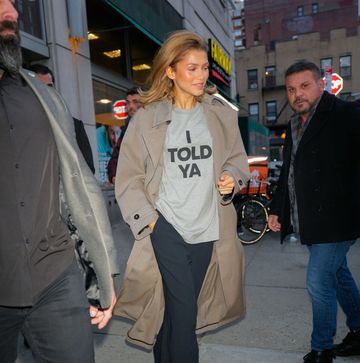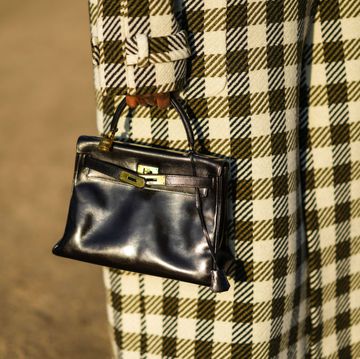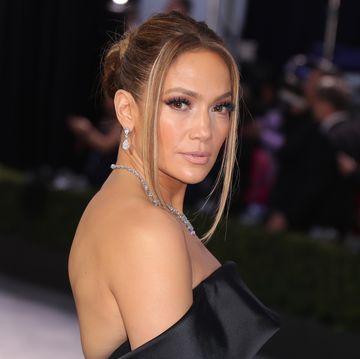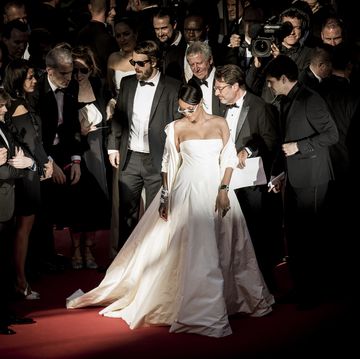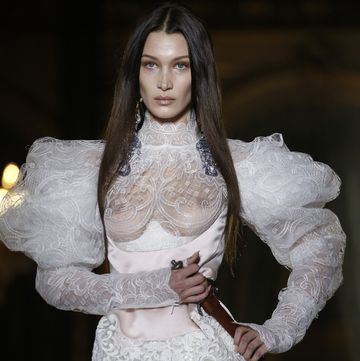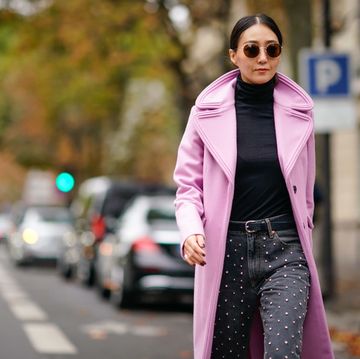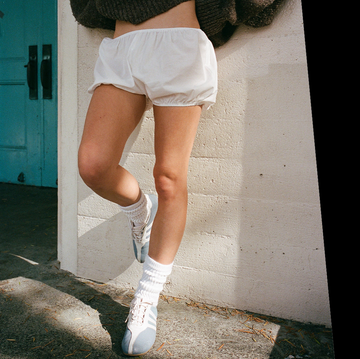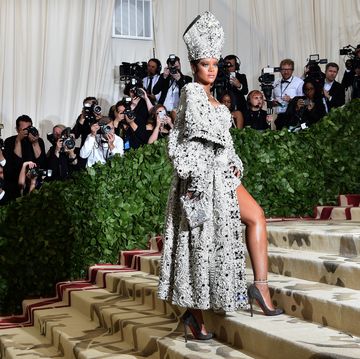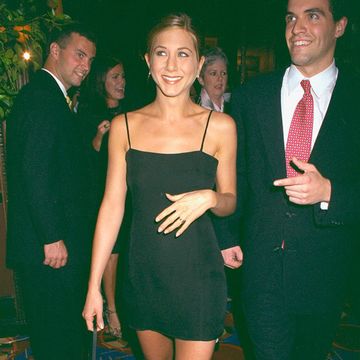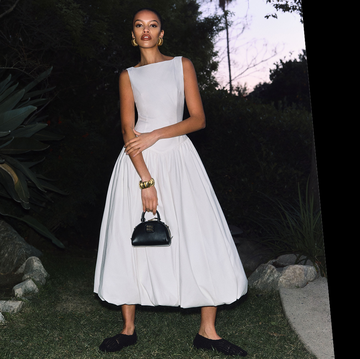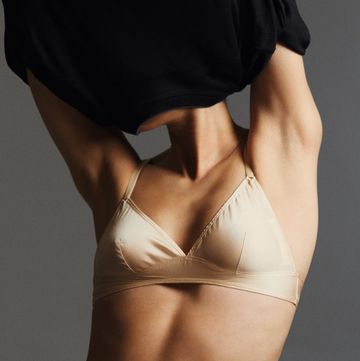The sound was of crackling static, the lighting harsh, as Junya Watanabe delivered his fast-paced, energised show, focused entirely on sportswear.
A zap of orange nylon here, a blast of acidic yellow there, punchy blues and searing reds the lurid colours one might normally associate with the gym, not haute fashion.
The models came out thick and fast, make-up-less automatons, each sporting a metal wig sprouting ever more aggressive spikes. There must have been over 100 exits whizzing out diagonally across the floor, striking hostile poses, before whizzing on again.
The speed and variety were intoxicating. But was it a comment on our out-of-control consumption of sportswear, the pace at which it is manufactured, the global churning out of manmade fibres? Or was it purely a display of what is achievable when a talent such as Watanabe collaborates with the sportswear giant Puma its logo, used discreetly on trainers and the final sculpted tech-mesh jacket?
From the first athletic outfits of leggings and running tops with darting flashes of garish colour, to a formal double breasted jacket in grey and black mesh, or those fine nylon skirts with undulating hems, Watanabe proved that, for day or night, ultra-sportswear is a viable proposition. Day being a fitted cagoule whose seams unzip to reveal a contrast colour, night being a little black dress, its filmy layers creating an interesting neckline.
This is the whole point of the House that Comme (Rei Kawakubo) built, Watanabes patron. It offers the new. Not just a hot look, a different proportion or an exciting use of unexpected fabric, but a forceful modern idea that pulls you out of your seat and makes you yearn to wear trainers, leggings and a voluminous draped synthetic football shirt to the next party.

